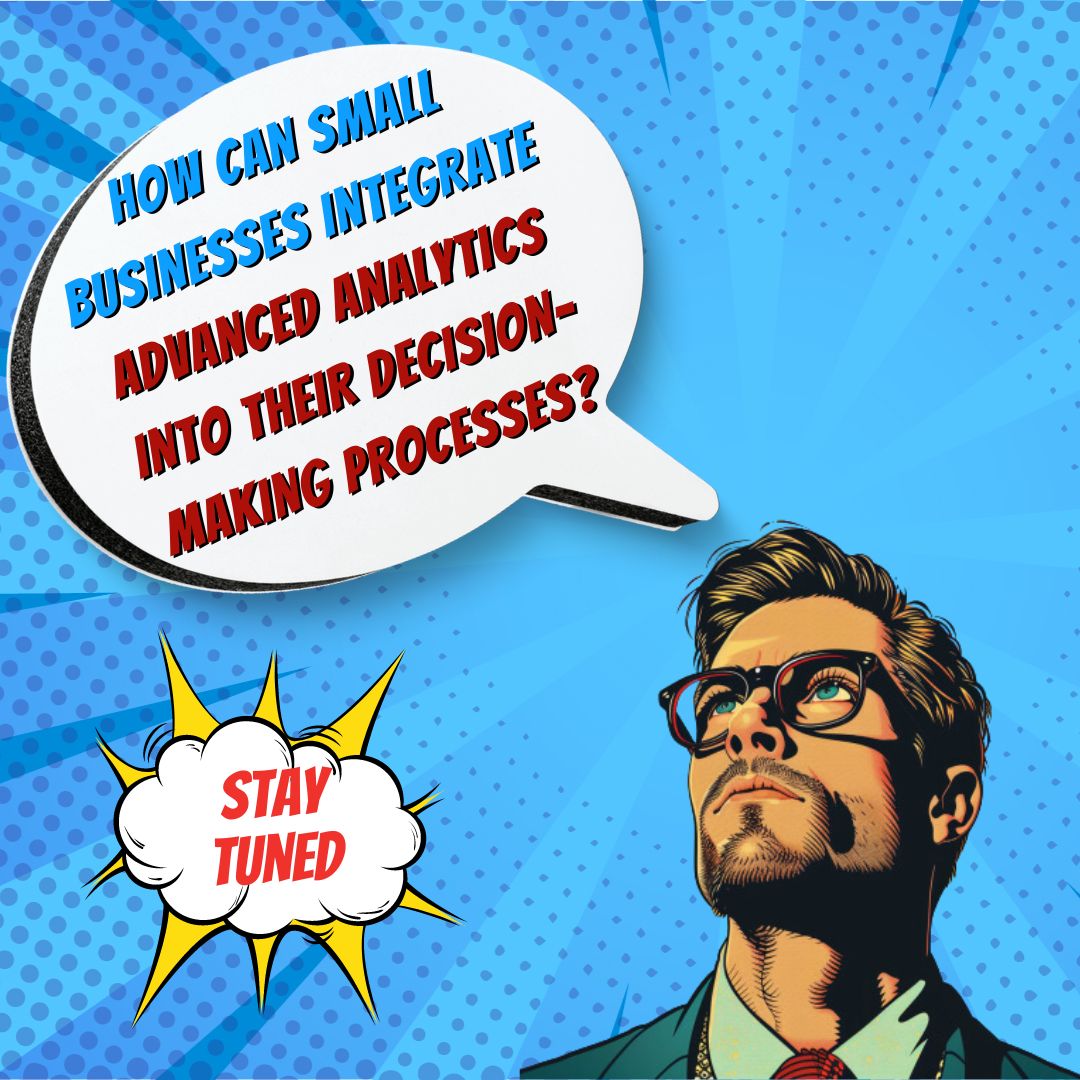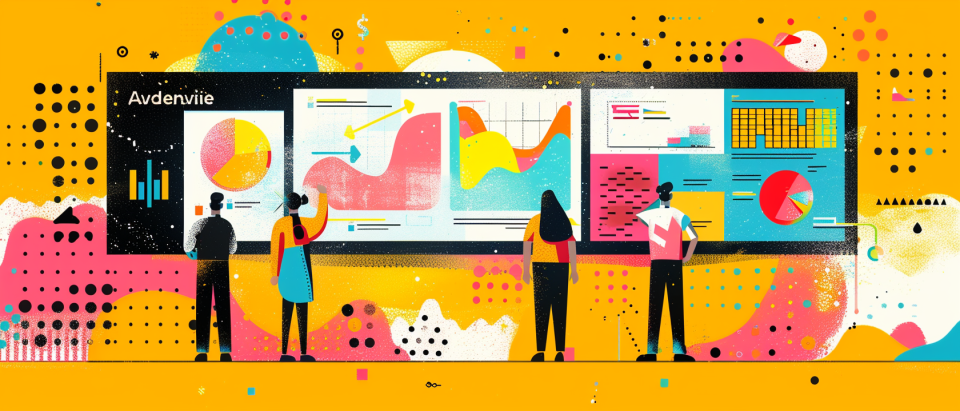Key Takeaways
✅ Leveraging Real-Time Analytics Tools: Small teams can use real-time analytics tools to join diverse data sources, like Segment and Shopify, making quick, data-driven decisions even with limited resources.
✅ Building a Strong Analytics Team: A clear data vision and strategy, along with a well-structured team, are crucial. Invest in people to create an effective analytics team that drives growth.
✅ Utilizing Advanced Collaboration Analytics: Tools like Microsoft Teams Premium can provide insights into collaboration patterns, helping small teams optimize their external and internal teamwork. 
Introduction
Can advanced analytics really transform the performance of small teams? This question is more pressing today than ever as businesses seek to harness the power of data for competitive advantage. Advanced analytics can significantly benefit small teams by offering real-time insights and precise decision-making capabilities, but what often holds them back are misconceptions around high costs and complexity. Small teams might feel overwhelmed by the jargon and tech-heavy strategies that dominate the landscape. Yet, with the right approach and tools, even small teams can unlock the immense potential of advanced analytics. Modern trends point to accessible and scalable tools that can turn data into actionable insights quickly, without requiring a large budget or a team of experts. This article will break down these barriers, offering practical tips and innovative perspectives on how small teams can leverage analytics to maximize revenue and achieve significant ROI. Hang tight as we uncover the steps and tools that make this transformation not just possible, but practical.
Top Statistics
| Statistic | Insight |
|---|---|
| Advanced Analytics Market Growth: The advanced analytics market is expected to grow to USD 96,386.5 million by 2032, achieving a substantial compound annual growth rate (CAGR). | This statistic highlights the growing importance of advanced analytics, urging small teams to adopt it early to stay competitive. |
| Analytics as a Service (AaaS) Market: The AaaS market is expected to reach nearly 69 billion U.S. dollars by 2028, with Google Analytics playing a crucial role in this expanding market. | The expanding AaaS market suggests an increasing accessibility of advanced analytics, making it easier for small teams to harness powerful tools without significant investments. |
| Efficiency Improvements: Google Analytics 4 can bring efficiency improvements, such as 412 Food Rescue's 50% reduction in reporting time. | Google Analytics 4's ability to streamline processes can help small teams focus on strategic tasks, enhancing their productivity and impact. |
| Business Decision-Making: Advanced analytics plays a critical role in business decision-making, with 63% of analytics decision-makers stating that analytics is in their top five priorities for marketing. | This underscores the pivotal role advanced analytics can play in helping small teams make informed decisions, optimizing their marketing efforts. |
Advanced Analytics
Advanced analytics has become a critical component in driving business decisions, but how do small teams tap into its potential without feeling overwhelmed? Lack of resources and limited expertise are just a few of the barriers these teams encounter. When you're a small team, the challenge isn't just learning advanced analytics—it's integrating them effectively without hindering your primary workflows.
Understanding these challenges is the first step. Small teams often struggle with implementing advanced analytics due to limited budgets and a shortage of specialized skills. For example, a small marketing team may find it tough to analyze huge amounts of data without a dedicated data scientist. This limitation can result in missed opportunities to enhance customer insights or optimize marketing efforts.
One solution lies in small data projects. These are more manageable, less costly initiatives that can yield significant benefits. By focusing on smaller, more specific datasets, small teams can implement analytics without needing hefty resources. For instance, consider a local retail shop using customer purchase data to predict trends. This kind of small-scale project not only provides valuable insights but is also cost-effective and easier to manage.
Building the right team structure is crucial. Defining clear roles and responsibilities helps ensure efficiency. Centralized models work well for teams with specific skill sets, while decentralized models offer flexibility. A hybrid model can provide the best of both worlds. Retaining top analytics talent is another key challenge. Offering ongoing education programs and fostering a collaborative environment can help in retaining skilled professionals.
Democratizing analytics skills within the team further smooths the way. Everyone, from managers to technicians, should have a basic understanding of analytics. Training sessions and hands-on experiences can be beneficial. The idea is to create an environment where all team members feel empowered to engage in the analytics process. It’s not just about having a data scientist on board but ensuring everyone can interpret and act on data insights.
Tools and technologies play a significant role. Cost is a major factor for small teams when choosing analytics tools. Open-source platforms can be a great place to start, offering robust functionalities without a steep price. When selecting tools, factors like ease of use and scalability are equally important. Some small teams have successfully implemented tools like Tableau or Google Analytics, which offer user-friendly interfaces and can be scaled as the team grows.
Advanced analytics doesn't have to be out of reach for small teams. With a strategic approach and the right resources, small teams can harness the power of data to drive more informed decisions. This democratization of analytics can turn data into a powerful asset, enabling small teams to compete with larger counterparts in their industry. By starting small and gradually expanding your analytics initiatives, the potential benefits become not just a possibility but a reality.

AI Marketing Engineers Recommendation
Recommendation 1: Start with Clear Objectives and KPIs: Having clear objectives and measurable key performance indicators (KPIs) is essential for leveraging advanced analytics effectively. According to a survey by NewVantage Partners, 77% of businesses report that they are seeing value from their analytics efforts, but only when aligned with defined goals. Small teams must identify specific questions they want to answer or problems they want to solve. Setting clear goals not only streamlines the data collection process but also helps in measuring success accurately.
Recommendation 2: Leverage Automated Analytics Tools: In a market where demand for real-time data insights is rising, adopting automated analytics tools can provide a significant edge. Tools like Google Analytics 4 and Tableau offer automation features that allow small teams to handle large datasets without extensive manual effort. Recent Gartner research indicates that businesses using automated analytics tools see a 30% improvement in data processing speeds and decision-making timelines. These tools are affordable and user-friendly, making it easier for small teams to gain insights without needing to become data science experts.
Recommendation 3: Invest in Training and Upskilling: The effectiveness of advanced analytics hinges on the skill level of the team using the tools. LinkedIn’s 2023 workplace learning report highlights that 22% of companies are planning to offer upskilling opportunities in data analytics. Comprehensive training programs can significantly enhance a team's ability to interpret data insights and make informed decisions. Free resources like Coursera, edX, and vendor-specific training modules are excellent starting points for small teams. Investing in upskilling boosts efficiency and empowers your team to navigate complex datasets confidently..
Relevant Links
- Unlock Advanced Analytics Potential with Our Cutting-Edge AI Solutions
- Essential Strategies for Setting Impactful Campaign Goals
- Master Market Penetration through Campaign Reach & Audience Size
- Turn User Behavior Data into Actionable Insights
- Transform Your Marketing with Personalized Advertising
Conclusion
Making advanced analytics accessible for small teams is not just a lofty goal—it's a practical and achievable ambition. By understanding and addressing common barriers, small teams can leverage advanced analytics to drive significant growth and innovation. Small data projects offer a manageable entry point, providing meaningful insights without overwhelming resources. Building the right team structure and democratizing analytics skills further empower teams to harness data effectively. Choosing tools and technologies that align with the team's specific needs ensures that analytics initiatives are executed smoothly and sustainably. In summary, with strategic planning and the right approach, even the smallest teams can unlock the transformative power of advanced analytics. So, why wait? Start today by evaluating your team's needs and investing in the right tools and training to pave the way for a data-driven future.

FAQs
Question 1: What is Advanced Analytics?
Answer: Advanced analytics is a subcategory of business intelligence (BI) tools that uses complex algorithms, machine learning, and AI to predict future trends and behaviors, providing deeper insights and predictions.
Question 2: How does Advanced Analytics differ from Basic Analytics?
Answer: Basic analytics focuses on historical data, identifying patterns, and analyzing past performance, whereas advanced analytics is proactive, using advanced techniques to predict future outcomes.
Question 3: What are the outputs of Advanced Analytics?
Answer: The outputs are focused on helping businesses make better decisions, such as improving ROI, enhancing customer engagement, and improving productivity.
Question 4: What are the different types of Advanced Analytics?
Answer: Techniques include data mining, big data analytics, statistical analysis, text analysis, and multivariate testing. Combining these techniques helps answer complex questions about why events occur and what will happen if changes are made.
Question 5: What are the benefits of Advanced Analytics?
Answer: It improves business operations by reducing data security threats, anticipating customer needs, discovering opportunities for improvement, and enhancing risk management practices.
Question 6: How does Advanced Analytics improve decision-making?
Answer: It helps businesses make informed decisions by providing significant insights into target markets, improving customer loyalty, and boosting sales.
Question 7: What skills are required to use Advanced Analytics?
Answer: Critical thinking, communication, and technical skills such as data science, machine learning, and AI are essential for data scientists.
Question 8: How can small teams implement Advanced Analytics?
Answer: They can hire data scientists or train existing employees with interest and aptitude, and use industry-specific advanced analytical platforms that meet their unique needs.
Question 9: What tools are available for Advanced Analytics?
Answer: Industry-specific platforms and tools like Tableau, Microsoft Power BI, and Google Data Analytics provide advanced analytical capabilities.
Question 10: How can data analysts effectively communicate insights?
Answer: By using clear metrics, charts, and graphs, and considering the audience's needs and existing knowledge.

Academic References
- Friedman, D., & Friedman, S. (2020). Teams in Small Organizations: Conceptual, Methodological, and Practical Considerations. Small Group Research, 51(1), 3-29. This study highlights the challenges of studying teams in small organizations, emphasizing the need for alternative data collection methods and longitudinal study designs to understand team processes and dynamics.
- Labrinidis, A., & Jagadish, H. V. (2012). Data Science and Analytics: An Overview from Data-Driven Smart Computing. ACM Computing Surveys, 34(3), 24-28. This overview defines advanced analytics as the autonomous or semi-autonomous analysis of data using advanced techniques to discover deeper insights, make predictions, or produce recommendations, with machine learning being a key technology in this area.








